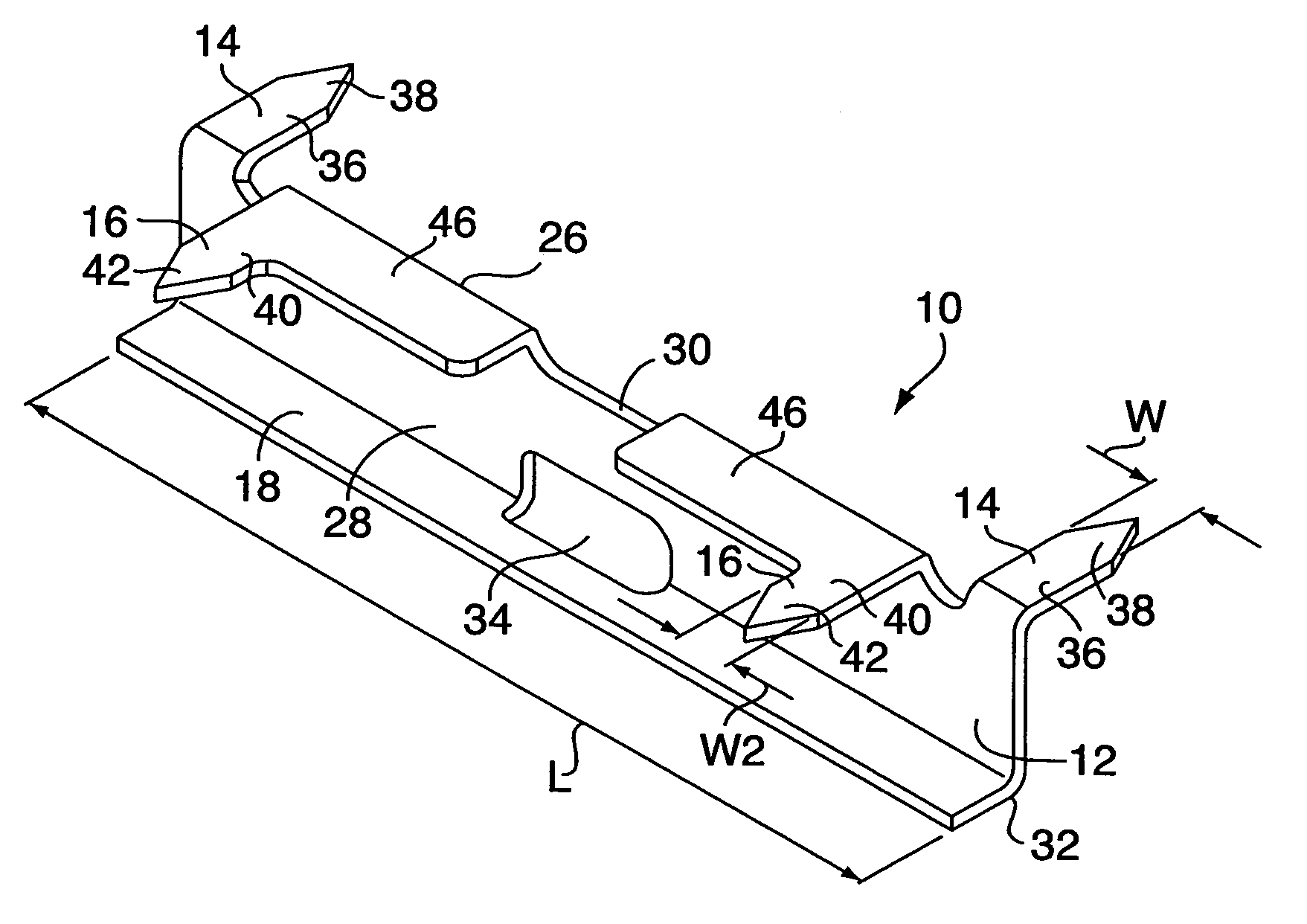Deck board fastener with concave prongs
a technology of concave prongs and fasteners, which is applied in the direction of nails, walls, mechanical equipment, etc., can solve the problems of unsightly display of protruding fasteners and/or other components, time-consuming, expensive, and sometimes impossible procedures, and achieves the effect of reducing the amount of screw head protruding and close positioning of adjoining boards
- Summary
- Abstract
- Description
- Claims
- Application Information
AI Technical Summary
Benefits of technology
Problems solved by technology
Method used
Image
Examples
Embodiment Construction
[0019]Referring to FIGS. 1 and 2, the fastener 10 of the present invention includes a thin, flat body portion 12, at least one first prong 14, at least one second prong 16, and a flange 18. The fastener 10 is operable to secure a first deck board 20 and a second deck board 22 together and to a support member 24.
[0020]Preferably, the fastener 10 is made of any suitable type of cut and bent sheet metal. In some embodiments, the fastener 10 is made from 0.06″ half-hardened steel that is rolled and not heat-treated. In other embodiments, the fastener 10 is made from 0.06″ 304 stainless steel that is quarter roll-hardened. The fastener may also be made from 0.03″ 420 or 440 stainless steel. Other materials and gauges are possible. Preferably, the fastener 10 is coated in order to hide the body portion 12 in the shadows created in the gap (discussed below and identified in FIG. 2 as “48”) between the adjoining deck boards 20, 22. In some embodiments, the fastener 10 is coated in a black o...
PUM
 Login to View More
Login to View More Abstract
Description
Claims
Application Information
 Login to View More
Login to View More - R&D
- Intellectual Property
- Life Sciences
- Materials
- Tech Scout
- Unparalleled Data Quality
- Higher Quality Content
- 60% Fewer Hallucinations
Browse by: Latest US Patents, China's latest patents, Technical Efficacy Thesaurus, Application Domain, Technology Topic, Popular Technical Reports.
© 2025 PatSnap. All rights reserved.Legal|Privacy policy|Modern Slavery Act Transparency Statement|Sitemap|About US| Contact US: help@patsnap.com



